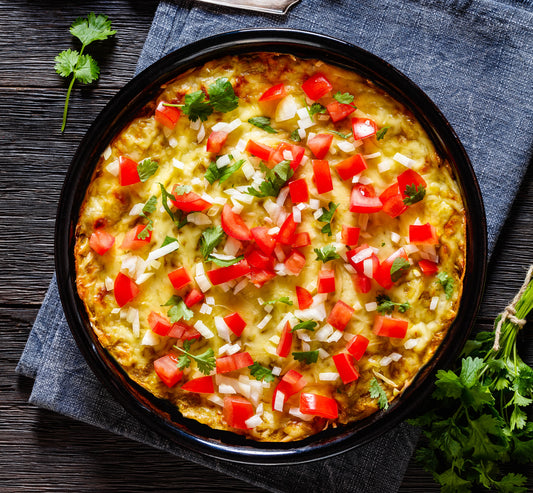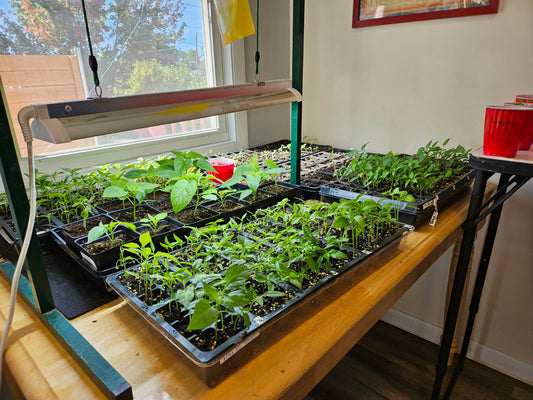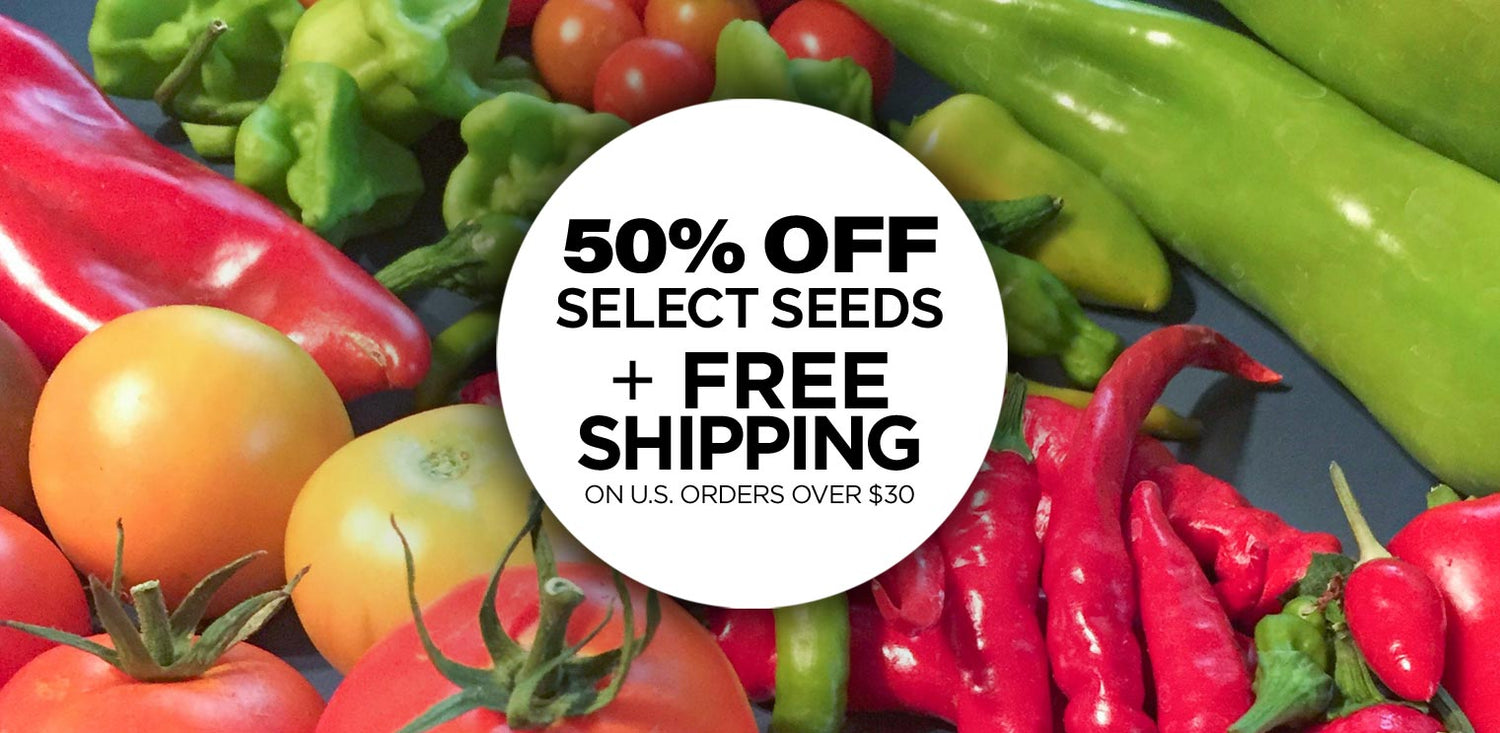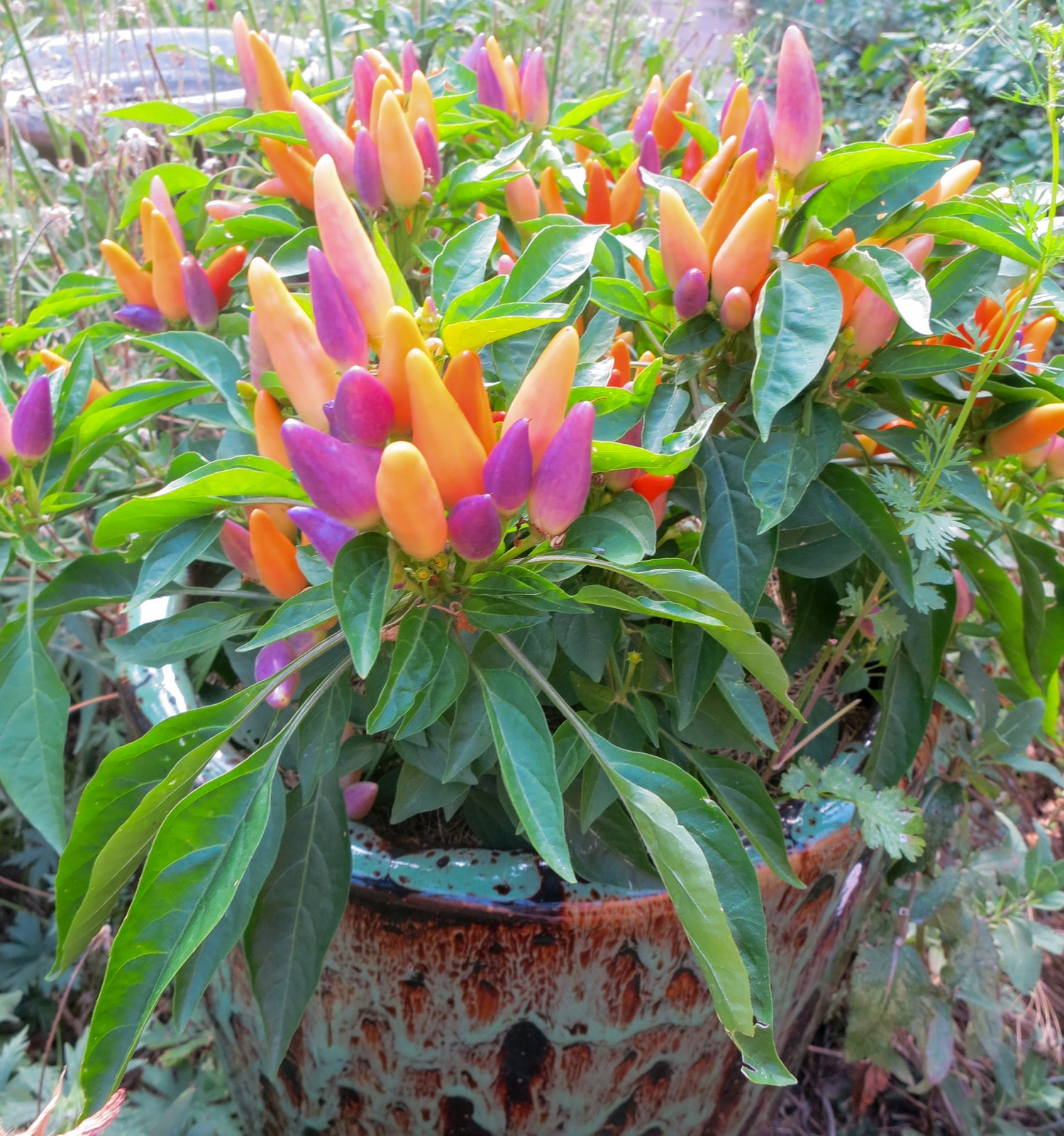
1. Use fresh, high quality Jalapeño seeds:
In recent years, jalapeño seeds have experienced what many are calling "Peppergate" – which meant that the seeds did not grow true to seed. Many people who purchased Jalapeno seeds from even some major seed companies experienced that the seeds grew into Banana Peppers. Not that Banana Peppers aren't also delicious, but they are certainly NOT Jalapeños and they didn't have the desired heat. If you want extra hot Jalapeños, be sure to try our super hot Orange Spice NuMex Jalapeno, which turns a brilliant deep orange and has 80,000 Scovilles so it packs a lot of heat! We also have a golden yellow Jaloro Jalapeno that looks a bit like a Banana Pepper but it's definitely a Jalapeño in flavor and has some heat with 5,000 Scovilles.
How to grow jalapeno peppers from fresh seeds:
Note: If you want to collect and grow seeds from fresh jalapeños, make sure they are fully ripe (usually they turn red) as these seeds will be more viable than those in immature green pods that you often find in the store. That doesn't mean that the seeds won't grow, but they are not as likely to be fully formed in green jalapenos as the seeds are from a fully mature red jalapeno.
Love Jalapeños? Check out all of our different varieties of Jalapeño seeds and grow some new ones this year!

Jalapeño plants like warm weather, so getting them growing indoors for 6-8+ weeks until it's warmed up outside to about 60-70˚ F at night is important. Peppers are very frost sensitive and get stunted in temperatures below 50˚ F or in cold soil. Keep them growing around 60-80˚ F for the happiest plants.

Jalapeño seeds (as well as all pepper seeds) benefit greatly from consistently warm and moist conditions for the best germination – 80-90˚ F is ideal. We recommend using a seedling heat mat to bring the temperature up. You only need to do this for germination, once they come up you no longer need the heat mat unless it's in a cool area. Pepper seedlings do fine at normal home temperatures of 60-70˚ F. Be patient, most jalapeño seeds take about 7-10 days to germinate, it could take up to 21+ days so don't give up on them, and make sure to keep them warm for faster germination.

We do not recommend using Jiffy Pots or peat to germinate jalapeño seeds (or any pepper seeds), as they just don't seem to like to germinate in peat – perhaps because it dries out fast. We like to use a fresh seedling starter Mix such as Coast of Maine's which performs very well with all pepper seeds.

5. Provide Good Light
You don't need anything fancy, regular flourescent lights will work if close enough to your plants. There are also lots of small easy to use LED grow lights available now. Keep the light on for 14-16 hours a day. Usually a sunny window is not quite enough light especially in the shorter months of winter, so having any supplemental light will greatly benefit your jalapeno seedlings.

6. Give Jalapeño seedlings a breeze or a brush them with your hands.
Once your jalapeño seeds have germinated, encourage your pepper seedlings to grow stronger, thicker stems by providing them with a breeze from a fan, or you can also brush them daily with your hands. Leggy seedlings are often thought to be caused by lack of light, but without movement, seedlings will often grow very tall and weak - so movement and air flow will keep them more robust and healthy. This also helps prevent Damping off, which is a common seedling ailment caused by moist, stale air conditions.
7. Don't Overwater your Jalapeño seedlings!
Once sprouted, make sure to keep them moist but NOT SOGGY. Jalapeno plants will drown if they have constantly wet, soggy roots. Make sure to use well-draining seedling starting mix or potting soil in starter pots that have plenty of drainage holes so the roots don't sit in water. We even like to let the seedling mix dry out slightly between watering so that pepper roots can breath.

When your plants are small, they may start to put blooms out – we like to pinch off the first few blossoms on pepper seedlings to encourage them to put their energy into growing larger plants and deeper roots first. We find that this will help grow more peppers on larger plants.

9. Harden Off your Jalapeño Plants before planting outside!
When starting jalapeño seeds indoors, it is important that you expose them to the strong rays of the sun and breezes in small doses at first. We like to bring Jalapeño seedlings out for a few hours in dappled shade on the first day, and then work up to to a full day of full sun over a week or so. This will help prevent seedling transplant shock, sunburn and damage to your Jalapeño seedlings.
10. Plant in Full Sun!
Make sure to plant your Jalapeño plants outside in full sun, at least 6-8 hours of sunlight is best. They can be in dappled shade for a part of the day, as long as they get 6-8 hours of good sunlight.
Jalapeño peppers are light feeders, but will benefit from a regular feeding of a well-balanced, organic fertilizer such as Fish or Kelp Fertilizer, and compost tea. Homemade compost is also great to add to the soil before planting, and to top off as the season progresses as it releases nutrients slowly and builds the soil. Note: once your plants are larger later in the season, don't use Nitrogen heavy fertilizers as it will result in very bushy plants without flowers. Note: there are also other reasons that peppers have flowers but no peppers such as extreme temperatures.
Do your pepper plants have flowers but no peppers? Pollination is key to growing Jalapeños, bumblebees are great pollinators as they buzz the flowers resulting in lots of peppers. To attract them, grow organically, do not use pesticides or herbicides, and plant lots of native flowers, Lavender, or annual flowers like Nasturtium, Sunflowers, Zinnias, to attract lots of beneficial insects and pollinators.

How long does it take to grow jalapeños from seed?

Do jalapeños need full sun?

Jalapenos are easy to grow from seeds!
Happy growing!








